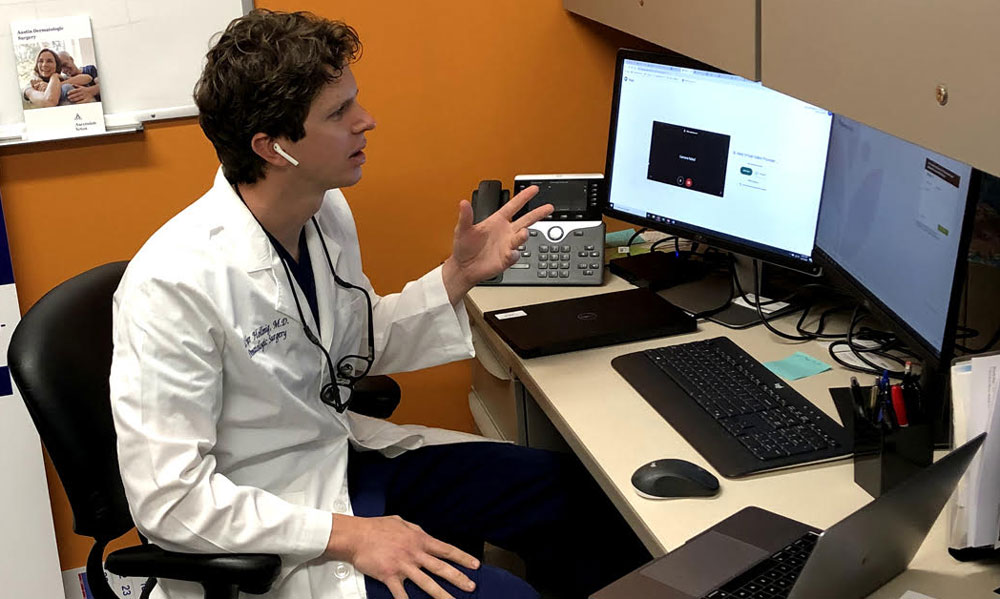Texas Telemedicine’s COVID-19 Response Reveals Health Care’s Future

Perhaps one silver lining to the COVID-19 public health disaster is that it acted as a catalyst, forcing insurance companies, lawmakers and clinicians to move quickly and adopt up-to-date health information technology (health IT) to ensure health care remains safe and accessible for Texans.
At this time, telemedicine, telehealth and telemonitoring programs for patients and providers are being extensively used during the COVID-19 pandemic with promising results.
After the statewide disaster proclamation Gov. Greg Abbott issued on Mar. 13 in response to the pandemic, Insurance Commissioner Kent Sullivan of the Texas Department of Insurance (TDI) adopted an emergency rule to ensure adequate access to telemedicine and telehealth services, effective for 120 days with an option for a 60-day extension.
The new emergency rule mandates that telemedicine services receive parity with the payment and documentation requirements applicable to in-person services; requires health benefit plans to provide coverage for covered services or procedures delivered by telemedicine at the same rate as in-person services, without documentation beyond what the plan already requires for in-person services; and requires reimbursement at the same rate as in-person services.
But whether these emergency changes in Texas telemedicine rules remain in place once the emergency rule has expired and the pandemic is contained remains in question.
Removing Barriers
“Ascension has been involved with telemedicine for three years, but the two biggest barriers we’ve had are concern over reimbursement and Health Insurance Portability and Accountability Act (HIPAA) compliance, and what this governor did was give us the confidence that we could make it work during COVID-19,” says Dr. Jason Reichenberg, president at Ascension Medical Group Texas.
With those barriers removed, Reichenberg says doctors are exploring telehealth options that work best for their patients.
“We can now use virtually any platform. Now that patients are aware of this option, I don’t think people will be willing to give it up. I have not had a single day when patients have not said, ‘This is so much easier,’” says Reichenberg.
“We’ve done plenty of virtual telemedicine visits where patients have gone to their car for privacy, or we’ve visited during their lunch break and they don’t have to take time off from their jobs. Patients are going to expect part of their doctor visits to be virtual, and while these emergency orders will revert at some point, we are confident the Texas Legislature won’t completely eliminate these changes and will do something to keep this (telehealth) going forward,” Reichenberg says.
Quick Pivot
Telemedicine provides patients, regardless of socioeconomic status, with unique care not possible before, agrees Mark Steiger, executive director of Ascension Connect. “When you remove the obligation for someone to take a whole day off work, you’ve found an outstanding tool to reach the underserved,” he says.
Steiger led Ascension’s quick pivot to successfully deploy a COVID-19 hotline while setting up Ascension call center employees to work safely from home at the beginning of the pandemic. Telemedicine virtual visits have increased substantially since February [Exhibit 1].
| Month | Daily Average | Monthly Total |
|---|---|---|
| February | 61 | 1,229 |
| March | 400 | 8,806 |
| April | 1,496 | 32,918 |
Source: Ascension Connect
In addition to its pre-pandemic responsibilities, the Ascension call center now helps patients navigate the new world of virtual doctor visits and available off-the-shelf technology that allows multi-point care options, such as using health apps found on Apple Watches and smartphones.
Data Open Doors for Future Response
“As the pandemic continues, more aggregated data will be made available, allowing artificial intelligence algorithms and predictive analytic engines to analyze massive data collections, identify health trends and infer actions to be taken,” says Fernando Martinez, chief digital officer of the Texas Hospital Association (THA). “That was certainly the case with BlueDot, whose proprietary software accurately predicted the spread of COVID-19 worldwide.
“Using aggregated large bodies of data is leading to all sorts of parallel initiatives around the world aimed at applying or leveraging artificial intelligence, technology and algorithms,” Martinez says. “I think that's really the big driver behind why state government and federal government have legislatively allowed greater access [to open government data].”
Martinez predicts the response to the current COVID-19 crisis will open the door for technological advances in telemedicine and worldwide health care without borders: “Whether it's health solutions for an urban setting or a rural geographically dispersed situation, you're going to see the adoption of technology far greater and much faster as a result of that need.”
For more information about Texas telehealth, the Texas Comptroller’s office speaks with Dr. Thomas J. Kim about his telemedicine practice and examines how health information technology legislation could help Texas tackle the health care challenges of our state.

